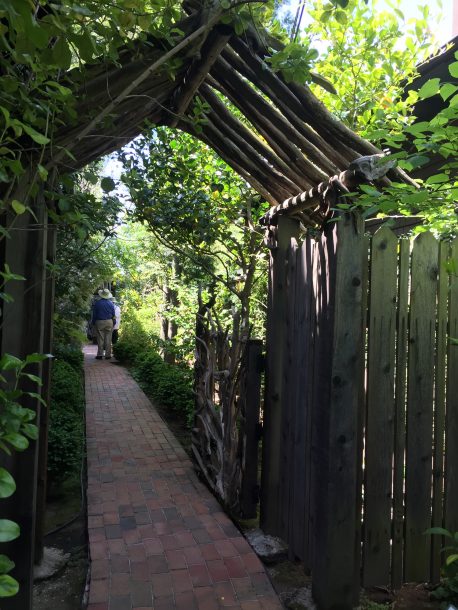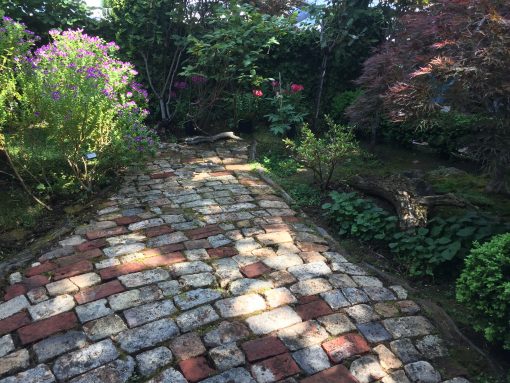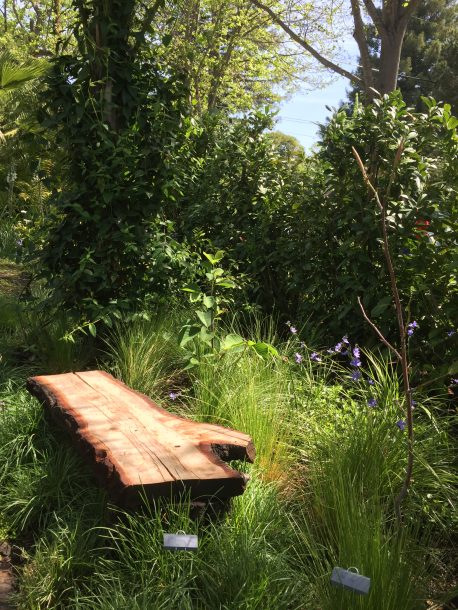On a lovely spring day recently I spent some time in Palo Alto enjoying local gardens. It?s amazing what can be accomplished on a small lot where every foot counts. If you are looking to add some pizzazz to your garden and not spend much money, one of the gardens I visited will be right up your alley. Here are some take-a ways for your own landscaping.

Using driftwood collected from remote Santa Cruz beaches the owner of one amazing garden created a gate, several fences, flower bed borders to keep the dog out, an arbor and even a gazebo. He found used bricks and stones to build paths and also a patio but it was all the driftwood creations that caught my eye.
Take a few moments to really look at your garden. Look at the view from inside the windows and from the driveway as you enter. Then imagine all it could be with some simple changes.

The elements of garden design, like arrangement of paths, planting beds and open spaces, shape your garden. Have you ever noticed how your eye is drawn along a path through the garden? The plantings along the sides serve to frame but it’s the style of the path itself that enhances your experience in the garden.
The materials you choose for a path determine how fast or slow your walk will be. A casual path of gravel or bark chips lends itself to slow meandering around bends in the path. Flagstone pavers set in sand with spaces left between for low growing ground covers are good choices for both major access walks and smaller paths. Be sure to space the stones no further than a comfortable stride apart.
A curved line or offset sections of paving slows movement inviting you to notice the surroundings. Curves should look as if they are supposed to be there. Place a large plant, rock or sculptural feature at a turning point so that you must walk around the object. Remember a lightly curved path makes a nice entrance walk or a stroll through the garden but stick with straight lines for a path to take out the trash or get fire wood.

If your garden is small, a tapering path edged with curving flower beds will seem to converge on the horizon, giving the illusion of depth and distance. Plantings of grasses in the beds will create a sense of movement.

You can separate plants and people by designing seating along the walkways. A good spot to place seating is at a fork in the path or where two types of paving meet another. Any object you can comfortably sit on is a possibility. Besides wood or ornamental iron benches, rocks, tree stumps, seat walls and planters can also double as seating.
Limit the number of elements in the garden. Rather than trying to include everything in the garden try for a unified look with the fewest number of things. Make each one count.

Creating interest outside a window depends not only on plant choices but also simple design solutions. Keep the garden simple and restful. Editing some of the plants will make the garden lower maintenance, too. Plants that have overgrown the space need constant pruning. Move them to a better spot.
Another tip that makes an area more restful visually is to limit your plant palette. Plants that you can see through make a space seem larger. Some plants like Japanese maple, nandina and dogwood are naturally airy while other plants like camellia can be pruned for openness. Low growing, mounding ground covers help unify the garden. Plant soothing greenery for year round appeal with seasonal color from perennials and shrubs.
The great thing about making a garden is that you don’t have to do it all at once. And gardens are easy to alter as your ideas change. A garden is never done.
